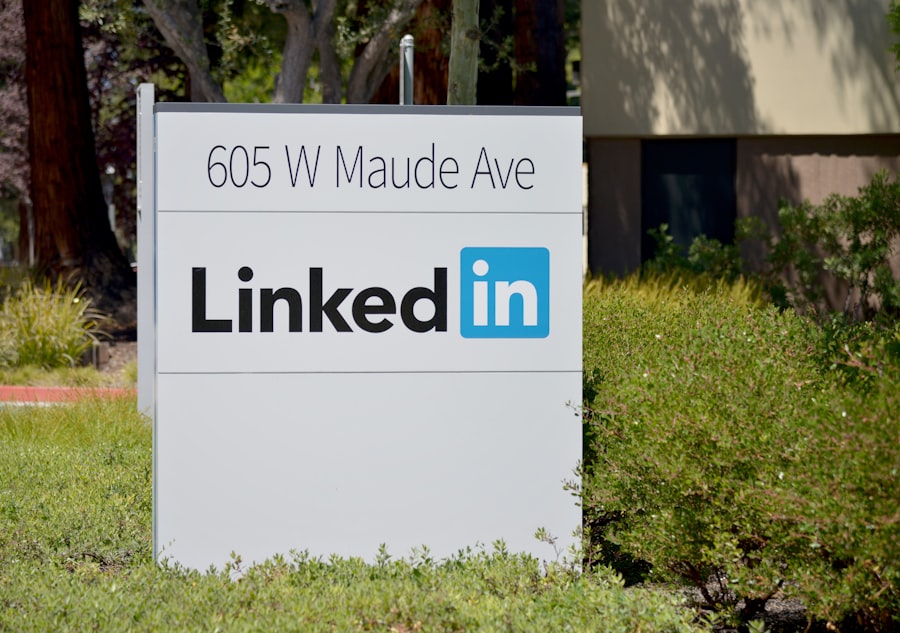A well-crafted LinkedIn profile is essential for creating a positive impression on potential employers and professional connections. Begin by selecting a professional profile picture that aligns with your personal brand and industry standards. Craft an attention-grabbing headline that incorporates keywords related to your skills and experience.
In your summary, emphasize your unique value proposition and distinguishing qualities within your field. Utilize bullet points to present your experience, education, and relevant certifications or awards. Conclude your profile with a clear call to action, such as inviting connections or encouraging contact for professional opportunities.
To enhance your profile, incorporate multimedia elements that showcase your work, including links to articles, presentations, or completed projects. These additions provide a more comprehensive view of your skills and expertise. Seek recommendations from colleagues or supervisors to add credibility to your profile.
A robust LinkedIn profile serves as both a digital resume and a personal branding tool, helping you stand out in a competitive job market.
Key Takeaways
- Use a professional headshot and compelling headline to create a strong LinkedIn profile
- Utilize LinkedIn job search features such as advanced search and job alerts to find relevant opportunities
- Actively network on LinkedIn by connecting with industry professionals and engaging with their content
- Research companies and industries by following their LinkedIn pages and staying updated on their latest news and updates
- Engage with LinkedIn groups by participating in discussions and sharing valuable insights with other members
- Leverage LinkedIn recommendations and endorsements to showcase your skills and expertise to potential employers
- Consider using LinkedIn Premium for access to advanced job search filters and the ability to message recruiters directly
Utilizing LinkedIn Job Search Features
Advanced Search and Job Alerts
Start by using the advanced search option to filter job listings by location, industry, experience level, and company size. You can also set up job alerts to receive notifications when new positions that match your criteria are posted.
Streamlined Application Process
Take advantage of the “Easy Apply” feature, which allows you to apply for jobs directly through LinkedIn with just a few clicks. Another useful feature is the “Jobs You May Be Interested In” section, which uses LinkedIn’s algorithm to suggest relevant job openings based on your profile and activity.
Proactive Outreach
Finally, consider reaching out to recruiters and hiring managers directly through LinkedIn messaging to express your interest in specific positions or inquire about potential opportunities within their organizations. This can help you discover opportunities that you may not have found through traditional job search methods.
Networking on LinkedIn

Networking on LinkedIn is an essential part of building professional relationships and expanding your career opportunities. Start by connecting with colleagues, classmates, and industry professionals to grow your network. When sending connection requests, personalize the message to remind the recipient of how you know each other or why you’d like to connect.
Engage with your connections by liking, commenting on, and sharing their posts to stay on their radar and build rapport. Joining LinkedIn groups related to your industry or interests can also help expand your network and connect with like-minded professionals. Participate in group discussions by sharing valuable insights and asking thoughtful questions to demonstrate your expertise and engage with other members.
Additionally, consider reaching out to second-degree connections for informational interviews or mentorship opportunities to further expand your network and gain valuable insights into different career paths. Networking on LinkedIn is an essential part of building professional relationships and expanding your career opportunities. Start by connecting with colleagues, classmates, and industry professionals to grow your network.
When sending connection requests, personalize the message to remind the recipient of how you know each other or why you’d like to connect. Engage with your connections by liking, commenting on, and sharing their posts to stay on their radar and build rapport. Joining LinkedIn groups related to your industry or interests can also help expand your network and connect with like-minded professionals.
Participate in group discussions by sharing valuable insights and asking thoughtful questions to demonstrate your expertise and engage with other members. Additionally, consider reaching out to second-degree connections for informational interviews or mentorship opportunities to further expand your network and gain valuable insights into different career paths.
Researching Companies and Industries
LinkedIn is a valuable tool for researching companies and industries to stay informed about the latest trends and developments. Follow companies of interest to receive updates on their activities, such as new job openings, company news, and employee insights. Use the “Companies” tab to explore company profiles, including information about their size, location, industry, and recent activity.
Additionally, utilize the “Insights” feature to gain valuable data about companies and industries, such as employee demographics, hiring trends, and skill gaps. This information can help you tailor your job search strategy and prepare for interviews by understanding the needs and priorities of potential employers. Lastly, leverage LinkedIn’s search functionality to find employees at specific companies or within certain industries to gather insights and potentially connect with them for informational interviews or mentorship.
LinkedIn is a valuable tool for researching companies and industries to stay informed about the latest trends and developments. Follow companies of interest to receive updates on their activities, such as new job openings, company news, and employee insights. Use the “Companies” tab to explore company profiles, including information about their size, location, industry, and recent activity.
Additionally, utilize the “Insights” feature to gain valuable data about companies and industries, such as employee demographics, hiring trends, and skill gaps. This information can help you tailor your job search strategy and prepare for interviews by understanding the needs and priorities of potential employers. Lastly, leverage LinkedIn’s search functionality to find employees at specific companies or within certain industries to gather insights and potentially connect with them for informational interviews or mentorship.
Engaging with LinkedIn Groups
Engaging with LinkedIn groups is a great way to connect with professionals in your industry, share knowledge, and stay updated on industry trends. Join groups that align with your professional interests and actively participate in discussions by sharing valuable insights, asking questions, and engaging with other members’ posts. This can help you establish yourself as a thought leader in your field and expand your network by connecting with like-minded professionals.
Consider creating your own content within groups by sharing articles, blog posts, or thought-provoking questions related to your industry. This can help spark meaningful conversations and position you as an active contributor within the group. Additionally, take advantage of group events such as webinars or networking meetups to further engage with group members and build relationships outside of the digital space.
Engaging with LinkedIn groups is a great way to connect with professionals in your industry, share knowledge, and stay updated on industry trends. Join groups that align with your professional interests and actively participate in discussions by sharing valuable insights, asking questions, and engaging with other members’ posts. This can help you establish yourself as a thought leader in your field and expand your network by connecting with like-minded professionals.
Consider creating your own content within groups by sharing articles, blog posts, or thought-provoking questions related to your industry. This can help spark meaningful conversations and position you as an active contributor within the group. Additionally, take advantage of group events such as webinars or networking meetups to further engage with group members and build relationships outside of the digital space.
Leveraging LinkedIn Recommendations and Endorsements

Requesting Recommendations
Request recommendations from colleagues, supervisors, or clients who can speak to specific projects or experiences they’ve had working with you. These recommendations provide social proof of your abilities and work ethic, which can be influential for potential employers or clients reviewing your profile.
The Power of Endorsements
Endorsements are another way to validate your skills on LinkedIn. Encourage colleagues and connections to endorse you for skills that are relevant to your professional expertise. This not only adds credibility but also increases the likelihood of appearing in search results when recruiters or clients are looking for individuals with specific skills.
Boosting Your Profile’s Credibility
By leveraging both recommendations and endorsements, you can significantly boost your profile’s credibility and showcase your skills and expertise to potential employers or clients. This can be a powerful way to stand out in a competitive job market and increase your chances of getting noticed.
Using LinkedIn Premium for Job Opportunities
LinkedIn Premium offers additional features that can enhance your job search efforts and provide access to exclusive tools for networking and career development. With a Premium subscription, you can send direct messages to recruiters outside of your network, see who has viewed your profile in the last 90 days, access salary insights for specific roles, and receive personalized job recommendations based on your profile activity. In addition to these features, LinkedIn Premium also provides access to online learning courses through LinkedIn Learning (formerly Lynda.com) that can help you develop new skills or enhance existing ones to stay competitive in the job market.
Consider upgrading to LinkedIn Premium if you’re actively seeking new career opportunities or looking to expand your professional network beyond your current connections. LinkedIn Premium offers additional features that can enhance your job search efforts and provide access to exclusive tools for networking and career development. With a Premium subscription, you can send direct messages to recruiters outside of your network, see who has viewed your profile in the last 90 days, access salary insights for specific roles, and receive personalized job recommendations based on your profile activity.
In addition to these features, LinkedIn Premium also provides access to online learning courses through LinkedIn Learning (formerly Lynda.com) that can help you develop new skills or enhance existing ones to stay competitive in the job market. Consider upgrading to LinkedIn Premium if you’re actively seeking new career opportunities or looking to expand your professional network beyond your current connections.
If you’re looking to branch out and explore new career opportunities, you may find this article on branching out and raking in helpful. It provides valuable insights on how to expand your job search and make the most of your professional network, which can complement the strategies outlined in the article on How to Find Job Opportunities Using LinkedIn.
FAQs
What is LinkedIn?
LinkedIn is a professional networking platform that allows users to create and maintain a professional profile, connect with other professionals, and engage in professional networking and job searching.
How can I find job opportunities on LinkedIn?
You can find job opportunities on LinkedIn by using the platform’s job search feature, which allows you to search for jobs by keyword, location, industry, and other criteria. You can also follow companies and join industry-specific groups to stay updated on job openings.
How can I optimize my LinkedIn profile for job searching?
To optimize your LinkedIn profile for job searching, make sure to include a professional photo, a compelling headline, a detailed summary of your skills and experience, and relevant keywords. You should also regularly update your profile with new skills, experiences, and accomplishments.
How can I network with professionals on LinkedIn to find job opportunities?
You can network with professionals on LinkedIn by connecting with people in your industry, joining relevant groups, and engaging with other users’ content. Building a strong network can help you discover job opportunities through referrals and connections.
Can I apply for jobs directly through LinkedIn?
Yes, you can apply for jobs directly through LinkedIn by clicking on the “Easy Apply” button on job postings. Some companies also allow you to apply through their company website or by sending your LinkedIn profile directly to the hiring manager.
Is LinkedIn Premium worth it for finding job opportunities?
LinkedIn Premium offers additional features such as InMail credits, access to salary insights, and the ability to see who has viewed your profile. Whether it’s worth it for finding job opportunities depends on your specific job search needs and how actively you are using the platform.



